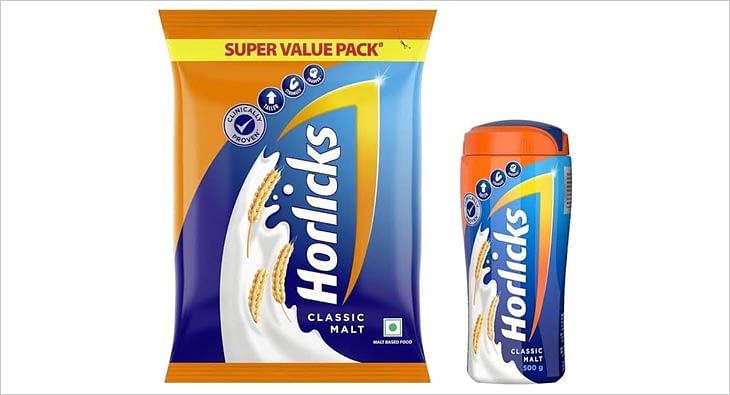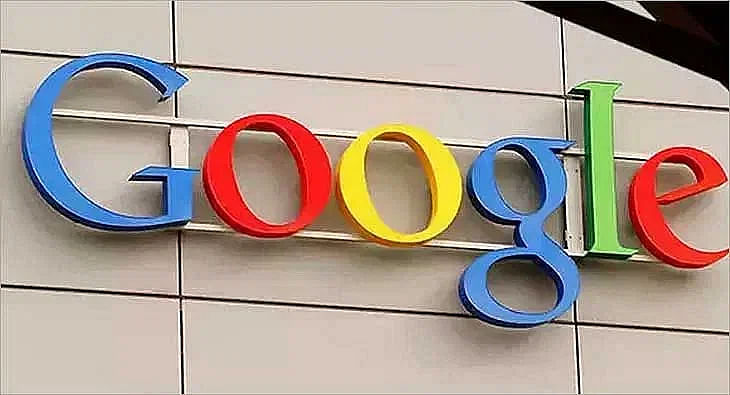"It's important for us to deliver a holistic experience back to the consumer"
Advertising is being seen as an interruption. So our challenge is to make communication more relevant by integrating it with content, say Mondelêz’s Bonin Bough and Sindhuja Rai

Mondelêz International has launched the ‘Getting to 10’ initiative, to bring 10 per cent of all spending to mobile. In conversation with exchange4media, Bonin Bough, VP, Global Media & Consumer Engagement at the company, and Sindhuja Rai, VP-Media and Digital at Mondelêz India, talk about mobile, the brand’s success on social media and pulling learnings from India to other markets.
You are a strong proponent of a world made better through collaboration and technology, and have always encouraged FMCG giants to behave like tech firms. How far has Mondelêz imbibed that culture?
Bonin Bough: Our CEO said right at the beginning that we should attempt to behave like the world’s largest start-up! We’ve been systematically rethinking how we approach creative, media and all other communication, bring new players into the ecosystem, introduce new types of organisations that you might otherwise not work with. At South by South West, we created the world’s first Oreo 3D printer, with the help of a company that actually designs platforms for NASA! We called it ‘Eat The Tweet’ – what’s trending on Twitter, you’re able to print it and actually taste culture through an Oreo! At this stage, we are prototyping it around the world and learning from it. When we set out to rethink Oreo for a digital world, one of the first campaigns we launched, which won at Cannes, was “Daily Twist”, reimagining culture through the eyes of Oreo. Let’s say you’re watching the IPL and you see an Oreo ad, you go online and have a conversation about that same Oreo ad, then you will actually be able to print that entire conversation into a physical product – there’s something very profound about connecting communication to actual product experience in such a real way.
What has been the response within the organisation to the adoption of technology?
Sindhuja Rai: With respect to India, there is huge excitement. Be it the marketing organisation or the sales system, everybody wants to understand and create capability quickly and utilise that capability to build larger value for the business. The potential of this does not just sit in the area of marketing and brand building – it has a much larger potential in terms of driving sales at the point of buying as well. There are a lot of projects we have already initiated in that direction to start driving sales and increase the return on investment.
What are the other areas or platforms that you are looking to leverage?
Sindhuja Rai: We have some of our own assets like Bournvita Quiz Contest. We have been sponsors on IPL for three years in a row as Cadbury. But last year, we tried to build certain learnings around how to use IPL more effectively for the brand in terms of what is the right kind of creative and how you can link it to call to action. The second screen phenomenon is very big in India right now. We had #ShubhAarambh and the TVC gave a call to action for people to get onto Twitter and activate it. Our digital, creative and brand teams were collaborating while the match was on and we were pushing out content in real time. We received a great response so we ran it for the entire 60 days of IPL 6.
Bonin Bough: One of the big opportunities for us is that we continue to learn and share across markets. We know that integrations supported by social work well for us and that’s a piece of learning we have scaled across the organization – India, US, Europe, Australia, China. The activation we did at the Olympics was spectacular – our Twitter Wheel was focused on building capabilities around Twitter and television. Being one of the first big marketers to make a true investment in Twitter has given us a unique early stage advantage. We continue to grow those capabilities, all based on the core understanding of connecting social and real time to a bigger communication ecosystem.
Tell us about Mobile Futures. What has been your experience in partnering the company’s brands with leading mobile start-ups?
Bonin Bough: Mobile Futures is about bringing a cultural transference from start-ups into big organisations. We announced that we would launch our ‘Getting to 10’, which was getting to 10 per cent of all spending on mobile, and our goal was not just to have aspirations to be No. 1 mobile marketer but we were actually going to put resources behind getting there. Think about the possibilities that leveraging the mentality of a start-up at a big organisation with big brands and resources can lead to. We had our folks work for a start-up for a week and now that they have started applying that thinking, we call them intrepreneurs – internal entrepreneurs. Mobile Futures has launched in the US, Brazil, and will launch in Australia and one other market in Asia.
Are you looking to partner with any mobile start-ups in India?
Sindhuja Rai: We are at a stage where we are confident about committing a certain amount of money to digital. Mobile is a large opportunity for us. A lot of us think that the size of the smart phone audience could be too small for us, but there is a huge unlock which is available to us right now in the feature phones space. That’s the focus for the year.
Bonin Bough: In this marketplace, they are already doing a lot – the missed call company, for instance. You have a significant amount of smart phones and a significant mobile population and in some markets, that’s the only piece of media that they use – it may be a feature or text phone. So how do you enable across the spectrum of mobility? What is interesting about India is that because you have such diversity in terms of ownership, we can build models here that we can export to places like Africa – similar in terms of the mobile marketplace. So how do we begin to use India as a model, how do we prepare ourselves as we go into some of these other mobile markets?
How has Mondelêz’ global advertising deal with Facebook across 52 countries panned out?
Bonin Bough: Facebook is such an amazing partner for us, and that was the largest geographic footprint deal they have done. It allows us to leverage the strength of some of their strongest markets. India being the second largest Facebook market, it also allows us unique access to analytics and insights. It gives us access to new technology, programmes and feature sets that they offer.
Sindhuja Rai: Publishers like Facebook and Google are helping us understand the right kind of content format. That is a much bigger advantage of these partnerships than just the rate of discounts. Twitter has been the lead platform for some of the most path-breaking digital campaigns we have done in the last one year. Bournville is one of the brands in our portfolio, where digital is the lead medium.
What did the ‘Not so Sweet’ activity do in essence for Bournville?
Sindhuja Rai: Our mind measures went up and the change in the proposition got picked up very quickly, so the awareness and buzz of what we wanted to generate went up dramatically. In terms of measurement, we have evaluated the overall efficacy on the mind measures because sales is a function of many more parameters.
Bonin Bough: We are now planning video as if it is part of our TV strategy. We are seeing higher ROIs on videos across the globe, sometimes 60 per cent to 100 per cent higher. Television is still a massively scaled and effective platform but at the same time, engagement rates are dropping, we are hitting a point of diminishing return earlier on our investments across the globe.
Sindhuja Rai: The important thing for us is to deliver a holistic experience back to the consumer from a communication point of view. Advertising is being seen as an interruption. So our challenge is to make communication more relevant and engaging, by integrating it with content.
What are the brands that have maximum traction on social media – you have premium as well as popular brands – which of them drive more consumer engagement?
Bonin Bough: For me, it is not about a brand specifically as much as how do we learn which approach drives the consumer engagement. It is all about how you begin to approach these platforms.
A couple of years back, Mondelêz actually lost market-share in India due to new players coming in, and still faces tough competition. What is Mondelêz doing to differentiate itself from the competition?
Bonin Bough: There are certain marketing fundamentals – whether it is pack price or distribution, all those components that make up how you go to the market and how you differentiate the product and business. My role is to focus on media so we began to differentiate our media, how do I grow that ROI in a step change way. If I can see twice the effectiveness of a TV spot when I run social underneath it and I can make 70 per cent to 80 per cent of my TV work twice as hard, those are step change operations and are places where we as an organisation are going to lean in, learn and win. So for me, it is what we are doing from a media perspective and a medium of investment perspective.
What do you think of online stores versus brick and mortar retail for the confectionery and biscuits category?
Bonin Bough: It depends from market to market, but at the end of the day, commerce is commerce to us and if there is a place where consumers want to buy our products from, then we are going to figure out strategies accordingly.
Where does India stand in terms of the digital and social media advantage compared to all of Mondelêz International’s markets globally?
Bonin Bough: It is a highly important market for us because we continue to pull learnings from here. So much of what is being done here in the digital space is being shared with other markets, which is why it is a massively important market for us.
(With inputs from Henna Achhpal)
Read more news about Marketing News, Advertising News, PR and Corporate Communication News, Digital News, People Movement News
For more updates, be socially connected with us onInstagram, LinkedIn, Twitter, Facebook, Youtube, Whatsapp & Google News
About 60% Instagram influencers in India have fake followers: Report
As per a media report, influencer marketing platform KlugKlug has found that only 2.48 million profiles out of the 8 million have ‘high-quality’ followers
Two of three Instagram influencers in India have more than 60 per cent fake followers, a report by influencer marketing platform KlugKlug shows.
This is particularly true for the beauty and fashion sector, the report noted.
Other countries that have influencers with fake followers are Brazil, the UAE and Indonesia.
As per media reports, such Instagram fake followers can be roped in for as little as Rs 10 to a high of Rs 1,000.
According to Klug Klug India, only 2.48 million profiles out of the 8 million have high-quality followers.
A number of other categories have also been buying fake followers, media reports have noted.
As per a media expert, quoted in the reports, brands are finding it difficult to identify and curb the menace of fake followers and bots.
In a recent setback for influencers the Central Consumer Protection Authority (CCPA) has said those promoting activities like gambling and betting are equally liable as the companies promoting the same.
15% consumers enhance their user experience through virtual assistants: Kantar report
According to Soumya Mohanty, Managing Director & Chief Client Officer- South Asia, Insights Division, Kantar, less than 1% of ads get tested due to lack of time
Marketing data and analytics firm Kantar has unveiled a report that studies the burgeoning AI market to dish out actionable insights for marketers. Within AI, virtual assistants are the fastest growing segment. The report noted that 15% consumers enhanced their ‘user experience through virtual assistants’. This segment is the fastest growing at 27% YoY.
According to the study, while ‘fitness’ and ‘social media’ apps are amongst the leading categories, driving AI adoption (with an average of 2.3 AI led features embedded in these applications), segments like ‘BFSI’, ‘job search’ and ‘short video’ apps are relatively slow in AI adoption, with an average of 1.2 features each. Entertainment apps, digital commerce and pharmacy apps stand somewhere in the middle with 2.0 & 1.8 AI features being adopted, respectively.
Additionally, the report said that while 90% of marketing and sales leaders think their organisations should be using AI “often”, 60% said their organisations “rarely or never” do. Speaking to exchange4media, Soumya Mohanty, Managing Director & Chief Client Officer- South Asia, Insights Division, Kantar highlighted that currently there are a lot of organisations who know that there is something called AI, but haven’t yet figured out how it could help them holistically.
“A lot of the AI just gets used for efficiency purposes, so repetitive tasks get automated,” Mohanty pointed out. Data also plays a big role in why certain organisations are struggling with how to use AI.
For instance, Mohanty explained that in segments like D2C, telecom etc. there is a lot of primary or first-party data. So being able to leverage AI also gets easier. “It's the traditional large sort of FMCG type companies where data sits in silos. You don't really have one single source of data where it's a little difficult to use the full power of AI, because the full power of AI also needs a lot of data sitting in a structure that you can use,” she added.
So, can AI help marketers have a unified view of data? No, says Mohanty. “AI does not help marketers get a unified view of data. Once you have data in a unified way, AI can help you do a lot more with that data.”
According to her, organisations today need to have good, strong data warehousing. “It needs to make sense because a lot of the silos are also because everybody owns one part of it. A lot of people have their own analytics teams internally, so there are a lot of agendas and stakeholders. And then we say data is in silos because fundamentally, when you're doing something internally, different people have different stakes in it,” Mohanty added.
Puneet Avasthi, Senior Executive Director, South Asia, Insights Division, Kantar shared that most organisations are now heavily investing in creating first-party data sets. “Companies that have first party data about their consumers and transactions or interactions that they have with the brand are going to be able to leverage that more effectively to create sharper profiles for the brand as such for the consumer and build relevant recommendations at the right moments.
Panning out she also highlighted how AI can be leveraged to enhance market research and make it more accessible, a part of which Kantar is itself involved in. “A lot of times people say that we can't test an ad because we don't have time. So less than 1% of advertising gets tested and just gets put out. Does it work when it gets put out? It is the question the audience should answer, because so many times, it backfires,” Mohanty shared. Apparently, digital particularly doesn't get tested because organisations just do a/b testing and leave it at that.
Speaking of preferred use cases of AI, Avasthi added that various businesses and brands are looking at creating an experience for the brand that is in line with the brand's architecture and progress across all touch points. “That is something that the AI engines that are working behind can ensure, that all such interactions are consistently delivered across different virtual assistants or chatbots that are available to the consumer,” he said.
The other use case, according to Avasthi, is ensuring that there is greater visibility for the brand in the digital sphere as such, through various recommendation engines, when a certain need is being looked for and to throw up the right kind of information about the brand so that the brand message is amplified in the mind of the consumers.
Among other insights from the Kantar AI report is that 88% consumers used AI based algorithms which analysed their preferences, behaviours, and interests to create personalised recommendations for tailored experiences. This segment grew at 6 % YoY. At 21%, ‘smart home automation’ is a smaller segment but growing at 25% YoY.












 Share
Share
